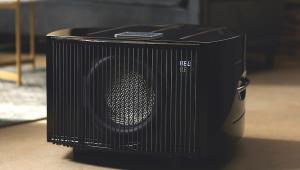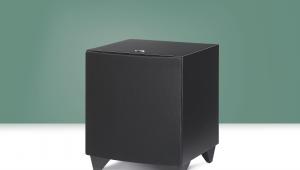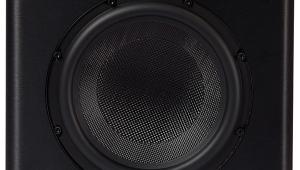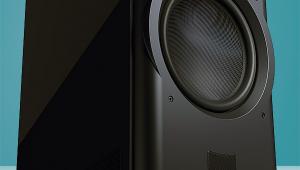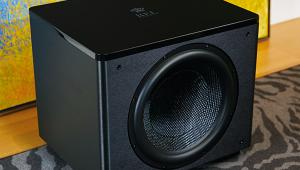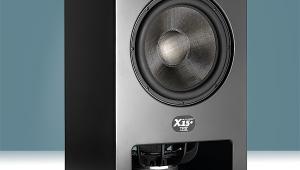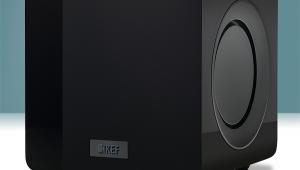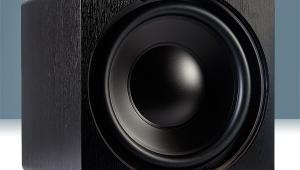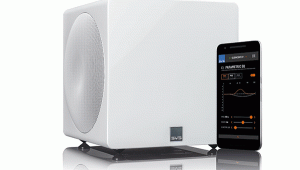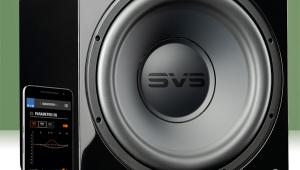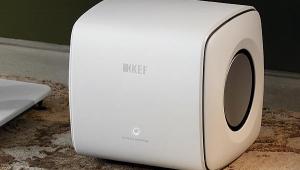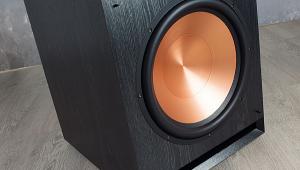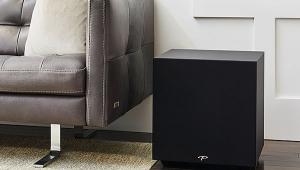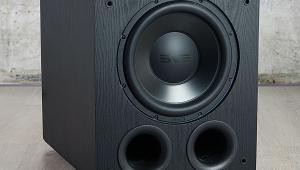Perlisten R212s subwoofer review

 With one woofer hidden away, there's more to the R212s than meets the eye. Steve Withers (per)listens in
With one woofer hidden away, there's more to the R212s than meets the eye. Steve Withers (per)listens inA relative newcomer to the home cinema scene, having only arrived in 2021, Perlisten hails from Wisconsin in the US, a big country where some people would consider a subwoofer with a 50in driver to be a 'viable option'. But assuming your movie room isn't the size of Wembley Stadium, can you mine the sonic depths without going to these extremes? The answer, thankfully, is yes.
That brings us to Perlisten's range of subwoofers, most of which employ dual drivers mounted in a sealed push-pull configuration to help generate that all-important deep bass from a relatively compact cabinet.
What's a push-pull subwoofer? While it might sound like something out of Doctor Dolittle, in reality it's an approach to sub design based on two drivers that are mechanically opposed. One pushes, creating positive excursion, while the other pulls, creating negative incursion. Since the two drivers share the same enclosure they 'cancel' each other out, reducing harmonic distortion and improving efficiency.
Perlisten sells two ranges of push-pull subs, the high-end D series and the mid-rangeR series. A scan of the specs suggests all these models share many feature and design traits, with the main differences (aside from price) relating to driver type and onboard power.
Meet the family
The D series is made up of the D215s and D212s, and as you've probably guessed the first sports 15in (carbon fibre) drivers, while the second has 12in versions. Both include amplification with a claimed output of 3,000W, and are certified THX Dominus.
The R series boasts the R212s tested here and the R210s, with their respective 12in and 10in glass fibre drivers powered by 1,300W of juice. They're certified THX Ultra, although if you use two R212s subs, or four of the R210s, they then qualify for THX Dominus status.
For the sake of completeness, Perlisten also offers a brace of more traditional subs in its D series with a single carbon fibre driver – the THX Dominus D15s and D12s, powered by 2,000W and 1,500W respectively. And it has recently announced new single-driver R series models, including one with an 18in woofer...
Brains and brawn
That's the general stuff out of the way, now let's dig a little deeper into the R212s. First off it's not cheap at £5,500,
so if you want to buy two to achieve THX Dominus status you'll be dropping some serious bank.
The hefty financial layout can be partly justified by the sub's elegant curved design and gorgeous piano black finish. What look like stud holes on the baffle are actually fixings – Perlisten's optional grille is magnetic.
The R212s isn't exactly small, clocking in at 60cm high, and at 48kg it's a two-person lift, but that's not surprising given there's a pair of 12in drivers, one firing upwards, inside. Also, the front baffle is 80mm thick, while the rest of the cabinet is 30mm, and thanks to horizontal and vertical bracing it feels suitably solid and vibration-free.
Inside is more computing power than an Apollo spacecraft, with the 1.3kW amp boasting a Texas Instruments 'floating point' DSP engine, and a 32-bit ARM processor that controls thermal status, monitors the current/voltage, detects faults, and performs distortion diagnostics.
The rear panel of the R212s is one of the cleanest and simplest I've seen; all you'll find are XLR and RCA inputs/outputs, a 12V trigger, a USB service port, and power switch. The reason for this lack of clutter is apparent once you've powered on and seen the sub's top-panel 2.4in LCD colour touchscreen. This provides access to basic setup and control, allowing you to select level, trim, three EQ presets, and even a 40Hz test tone.
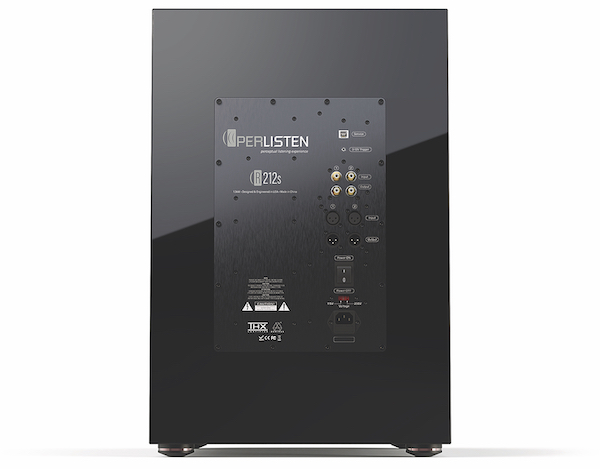
As cool as this is, you may never use it because Perlisten also has a remote app (iOS/Android) that provides the same functionality along with more advanced features, including controls for time delay, polarity and phase, a 30Hz-160Hz low-pass filter, and multiband parametric EQ. However you access the EQ presets, there's a choice of THX, Large Room and Small Room.
Going underground
I recently re-watched Wrath of the Titans on Blu-ray (don't ask) and had forgotten how enjoyable the LFE in this film is, especially during Chapter Six when our heroes have to navigate the Minotaur's labyrinth. A maze of tunnels open into a cavernous space where columns and rock walls move around, accompanied by an appropriately titanic bass-rich soundtrack.
The R212s does a fantastic job of mining these depths, delivering huge seismic thumps that create a palpable sense of scale as gigantic slabs of granite slam into place. It hammers home the push-pull design's ability to generate infrasonic energy from a relatively compact cabinet; this sub performs on a bigger scaler than it looks.
Since my cinema is reasonably spacious, I tried the Large Room setting, and there's no denying it squeezes a bit more out of the low-end, but at the expense of a degree of composure overall. The THX setting is less in-your-face but ultimately more natural, ensuring the R212s remains powerful, agile and accurate in terms of its delivery.
Next was Jumanji: Welcome to the Jungle (UHD BD), mainly because I saw this film in a Dolby Cinema and thus have a point of reference when it comes to handling the LFE. I specifically remember feeling the hit of drums that announce each new obstacle in the game, and the R212s did a fine job of approximating that particular sensation.
For anyone seeking a real bass-tester, look no further than Chapter 11. This sonically complex sequence has it all as a helicopter flies down a canyon over a stampeding herd of rhinos. The LFE of the animals' crashing feet was robust and punchy, but nicely integrated with all the other sound effects, laying a low-frequency foundation that gave the action an added urgency.
For more ultimate depth, the recent arrival of U-571 on 4K Blu-ray (I first used the film's DVD release as a demo disc over twenty years ago) is a must-own. The opening scene where the titular U-boat is being depth-charged by a British warship is the kind of sequence a subwoofer was made for. Through the R212s, the low-end rumbles that accompany the explosions were terrifyingly visceral, and as each thump got closer the tension became nail-biting.
The famous sequence in Chapter 12 starts with more depth charges but then finds the sub diving to greater depths to avoid the explosions. Here, Perlisten's unit energised the entire room with sub-bass energy that completely sold the illusion of the weight of all that water. Much like the crew I was sweating bullets by the end.
Push-pull beauty
The R212s is a very capable subwoofer that manages to deliver plenty of blunt force trauma while being nimble
and responsive when faced with sudden transients. Think of somebody with a bricklayer's shoulders and a ballerina's feet and you get the idea. The price tag is a bit hefty, and while 1,300W might sound like a lot, it can get stretched when driving two woofers. But otherwise this push-pull beauty will delight anyone looking for articulate bass and plenty of calibration potential.
HCC Verdict: 4.5/5
Perlisten R212s
Price: £5,500
www.perlistenaudio.com
We say: There's enough power and bass extension here to give you concussion, but once your head clears you'll also be impressed by this dynamic sub's precision and accuracy.
Specifications
DRIVE UNITS: 2 x 12in glass fibre woofers ENCLOSURE: Sealed, push-pull configuration FREQUENCY RESPONSE (CLAIMED): 14Hz-278Hz (-10dB, Boost EQ) ONBOARD POWER (CLAIMED): 1,300W ('short term' RMS) REMOTE CONTROL: No. App/LCD touchscreen DIMENSIONS: 600(h) x 410(w) x 500(d)mm WEIGHT: 48.2kg
FEATURES: Stereo/LFE line-level input on both unbalanced RCA and balanced XLR; RCA and XLR line-level output; level control; polarity switch; 0-270-degree variable phase; 30Hz-160Hz low-pass filter; test tone generator; 32-bit ARM Cortex M4 processor; 48-bit TI DSP engine; 2.4in LCD colour touchscreen display; iOS and Android remote app with preset EQs (THX, Large, Small) and 10-band parametric EQ; auto-on; 12V trigger; piano black finish; certified THX Ultra
 |
Home Cinema Choice #351 is on sale now, featuring: Samsung S95D flagship OLED TV; Ascendo loudspeakers; Pioneer VSA-LX805 AV receiver; UST projector roundup; 2024’s summer movies; Conan 4K; and more
|



